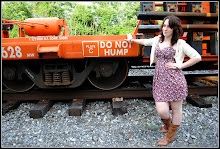British director Alfred Hitchcock and American director Preston Sturges are both well-known directors from the 1900’s. Hitchcock’s Blackmail (1921) and Sturges’ The Lady Eve (1941) are two well-known films that are known for the beautiful cinematography. Although both films are phenomenal for their times, they have several similarities and differences.
The Lady Eve is a classic screwball comedy, noted for its witty dialogue between main characters Jean Harrington (Barbara Stanwyck) and Charles Pike (Henry Fonda). The performance in this film was excellent. The on screen chemistry between Stanwyck and Fonda was fantastic. The entire film was crisp and clear. Also, the set design in this film was very convincing. This film is said to be the best of Sturges comedic films. In 1994 The Lady Eve was selected for preservation in the US National Film Registry.
Alfred Hitchcock’s Blackmail is considered to be one of Britain’s first sound films. Originally it was to be a silent film but after the popularity of sound started to develop the producer of Blackmail gave Hitchcock the go ahead to have some of the film with sound. With this being one of the first sound films the audio is quite well. The performance in this film is fairly decent, though some of it seems staged. Hitchcock added his unique style to this film. Having a beautiful blonde commit a violent crime and of course Hitchcock’s signature cameo that became a frequent occurrence in his films. Hitchcock’s cameo in Blackmail shows him being bothered by a small boy as he reads a book.
The Lady Eve had a better quality then Blackmail, mainly due to the The Lady Eve being produced twenty years after Blackmail. Even though The Lady Eve has a crisper presentation, Blackmail seemed to have a truer black color, while The Lady Eve has more grayish tones. Also, the performance in each film was different. Like I said previously, the acting in Blackmail seemed somewhat staged at times and more theatrical then that of The Lady Eve, which seemed more natural and convincing. .Furthermore, Hitchcock seemed to use imagery to make the audience understand how the main character Alice was feeling. For example, the knife laying on the kitchen table while her and her family were sitting down to eat a meal and how she kept starring at the knife uneasily or how she would see the man’s face she murdered through a homeless man on the street. All used to let the audience know the guilt and paranoia she is feeling, while The Lady Eve was a more of a straight to the point film.
Both of the films had creative shots. Ironically, both films had shoots where the camera zoomed into a mirror and showed what the character was viewing in the reflection. Other then the obvious similarities (black and white, sound, etc.) there wasn’t many similarities, since the films were twenty years apart and completely different genres.
Although, each film had few similarities and what seems to be more differences, both films were excellent for their time. Each film has a unique cinematographic elements that makes them worth viewing again and again even after sixty plus years.
Friday, February 26, 2010
Subscribe to:
Posts (Atom)
